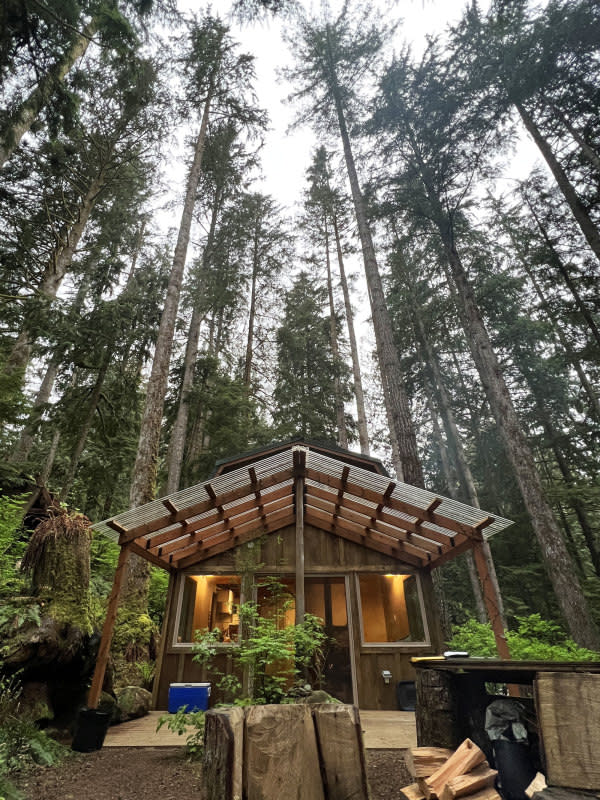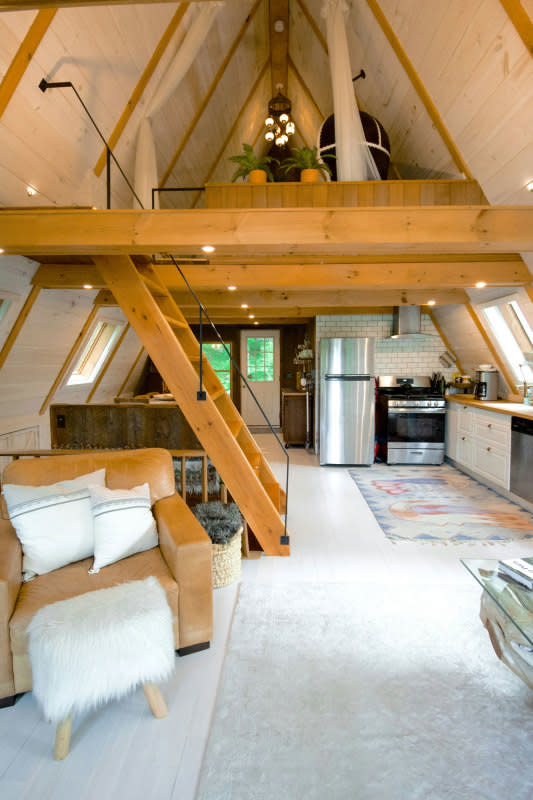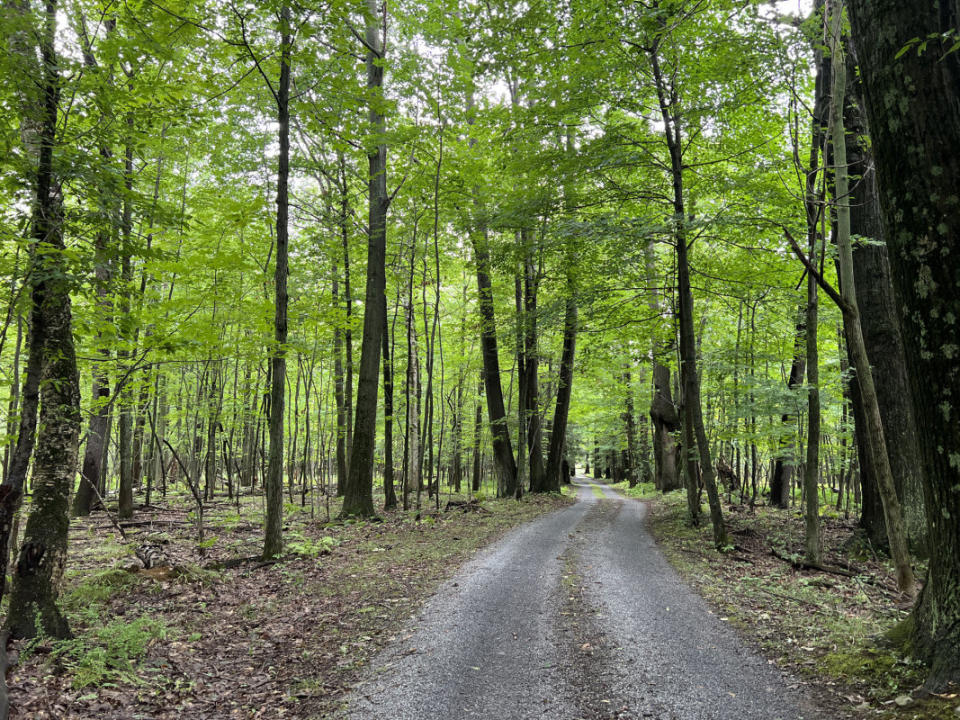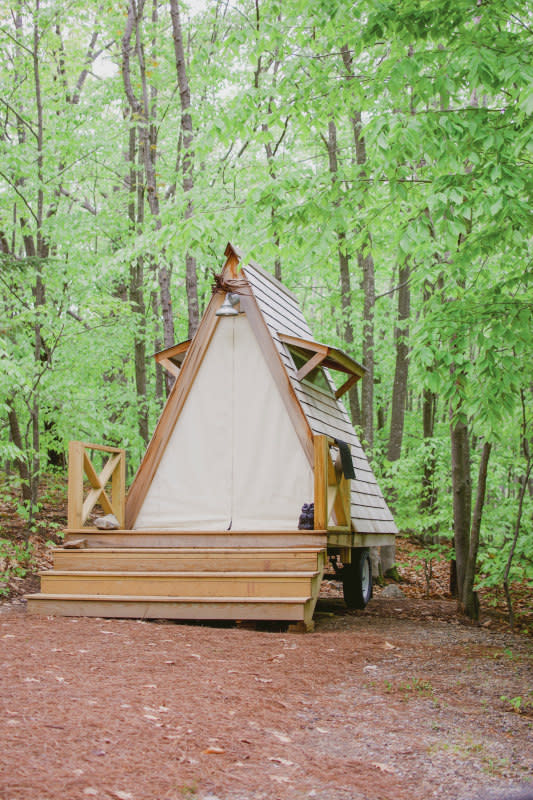The Data Behind Investing in a Tiny House—No Matter Where You Live in the US
The tiny house trend has captivated consumers worldwide with its promise of minimalist living and sustainable design. By opting into the ethos of "less is more," homeowners who seek tiny houses often look at it as an escape from the burdens of excessive possessions and a chance to prioritize experiences over material goods. With their compact size and clever utilization of space, these dwellings appeal for a variety of reasons. Some buyers seek financial freedom and an escape from conventional consumerism, others are striving for better environmental sustainability, a lower carbon footprint, and a simpler way of life. If you've owned one, you'll attest that it's a joy to creatively customize and personalize every inch of the living space to create a home that perfectly suits your needs and values.
As the niche trend grows in popularity, consumers often weigh the pros and cons of building a tiny house or purchasing an existing home. Given that they aren't often up for sale, consumers looking to downsize often relocate themselves (and their families!) in search of a simpler lifestyle. To explore the trend further, Architectural Digest shared data from a recent study that reviews house listings and builders to determine which states have the most luxury tiny home real estate listings. In the study, a luxury tiny home was defined as "a freestanding home with a for-sale price of $75,000 or more." The data was pulled in late January of 2024.
Architectural Digest also used data to estimate the average rent per square foot for homes in each state, as the trend to rent your home as an investment property also surges in popularity. So, whether you're planning to buy a pre-built tiny home or exploring the idea of building as a potential investment property, we think the insights reviewed will help you learn more about—what we believe is the brink of a big societal shift—becoming a tiny homeowner.

Emily Fazio
Find the Most Tiny Homes for Sale in These States
As the study looked at tiny homes for sale across the country, California led with 135 options, showcasing that it is a thriving market. When considering the number of tiny homes relative to the state's acreage, populous California and Texas maintain strong representation, while states like Oregon and Colorado exhibit significant presence despite their size.
California - 135
Texas - 81
Oregon - 74
Colorado - 56
Washington - 54
Tennessee - 46
North Carolina - 43
Florida - 34
Pennsylvania - 24
Arizona - 24
The study also looks at the size of tiny homes by state. Alabama had the largest average size at 404 square feet (which is larger than some NYC apartments). North Dakota sat on the other end of the spectrum at only 172 square feet.

Photo by Andrea Davis on Unsplash
To Buy or To Build
One correlation between the prevalence of tiny houses by geography seems to be high housing costs. In states where housing costs are exorbitant, like California and parts of the Pacific Northwest, tiny houses may be affordable alternatives. Additionally, those states may have stricter zoning laws and regulations, making it more challenging to build conventional homes but potentially easier to establish a smaller dwelling. Having a mobile tiny home is a major way many owners skirt around building codes.
Choosing between buying or building a tiny home ultimately depends on individual preferences and circumstances. Buying offers convenience, while building allows for customization (and a guarantee that you're in the best location). Consider the following factors when making your decision:
Convenience. Buying a tiny home saves time and effort, especially for those lacking construction skills or time.
Costs for land. If you're going to build, weighing the costs of the undeveloped land is important. Opting for rural or less developed areas may offer more affordable land options, but it could also mean sacrificing proximity to urban amenities.
Customization. Building enables tailoring the space to personal needs and preferences.
Sustainable, eco-friendly materials. Constructing a tiny home allows for the use of sustainable materials and practices, contributing to reduced environmental impact.

Emily Fazio
How to Consider ROI (Return on Investment)
As with all real estate transactions, don't overlook the potential ROI. Architectural Digest's report shares that tiny homes offer varying cost-effectiveness across different states, regardless of their level of luxury.
By comparing rental income to costs, the study identified states where tiny homes yield the best returns. Leading states indicate a quicker potential return. Less favorable states indicate that the investment viability fluctuates.
Leading States
1. New York: Rent/price ratio 0.0046
2. Hawaii: Rent/price ratio 0.0042
3. California: Rent/price ratio 0.0041
4. Florida: Rent/price ratio 0.0039
5. Iowa: Rent/price ratio 0.0036
Less Favorable States
50. North Dakota: Rent/price ratio 0.0015
49. Montana: Rent/price ratio 0.0016
48. South Dakota: Rent/price ratio 0.0017
47. Wyoming: Rent/price ratio 0.0018
46: Idaho: Rent/price ratio 0.0019
Whether you're buying a home for rental income or other investment purposes, be sure to factor in the potential return. The discrepancy in ROI demonstrated in the report underscores the significance of factoring in geographical and market dynamics.
Related: Ever Consider How Interior Design Influences Your Mental Health? NLM Data Backs Us Up
FAQ: How to Find a Place You'll Love
Where are the most expensive tiny houses?
When the study was reported, South Carolina topped the list with a tiny home listed at shocking price tag of $827,000. Oregon followed closely behind with a home listed at $695,000, while Texas secured third place with a listing of $435,000. The top 10 most expensive tiny houses were as follows:
South Carolina - $827,000
Oregon - $695,000
Texas - $435,000
California - $420,000
Washington - $379,998
Montana - $379,500
Colorado - $325,000
North Carolina - $285,000
Florida - $259,000
Arizona - $241,000
Is 400 square feet enough space?
"It really depends on your lifestyle," shares one of our writers, Max, who has built and lived in two tiny homes over the last decade. "Our current house is a 380 square foot footprint, but it’s 2 stories. I don’t think we’d be comfortable actually living full-time with the bedroom downstairs, too." He expands, saying that stacking the floorplan helps to make it feel more spacious. "That being said, we also built a treehouse, which was only 300 square feet and every inch of it was put to use. We felt fine living in there, but the climate also allowed us to spend most of our time outside the structure."
Related: 29 Ideas to Transform a Small Kitchen
Should I downsize to a tiny house?
"A tiny home isn't for everyone," adds Max. "They aren't all luxury. I think people have fun with it for a weekend (as a rental or their vacation home) but would feel the limitations long term. It really needs to be a choice. The modifications in lifestyle that you have to get used to are not for many people. If you aren't actively choosing to pursue a life with composting or incinerating toilets, managing systems for water collection, or getting creative with power sources, rethink what type of tiny house you really want."
He adds, "For example, I'm thinking about all my neighbors. Many of them have small cabins, and then they realize that can't share the space easily with their children... so they end up building another small cabin. But, if you're in the market to buy a tiny house with the mindset that you can use it as a short-term rental income opportunity, this might be the perfect opportunity. Many people want to try them out, making it a lucrative investment property."

Photo by Andrea Davis on Unsplash
What features and amenities should I look for in a tiny house?
Space-saving features. This could include built-in storage under stairs or furniture with hidden compartments.
Energy-efficient systems. Insulation, energy-efficient appliances, and renewable energy sources like solar panels.
Compact appliances. Opt for small (yet, functional!) appliances like a combination microwave/convection oven, a slimline dishwasher, a small/combi washer and dryer, and a small refrigerator.
Large windows and good ventilation. Large windows, skylights, and strategically placed vents can make a tiny space feel more airy.
Outdoor Living Space. Consider features like a deck or patio area to extend your living area.
Off-grid capabilities. If you plan to live off-grid or want the option for off-grid living, look for features like water tanks, a composting toilet, and a robust solar power system. (If you want to be semi-off-grid, bi-directional EVs are becoming more accessible. Imagine powering your home with your vehicle when you need power!)
Internet and phone connectivity. Lots of tiny homes are built in remote areas, and not all remote areas have reliable internet access. Factor this in, especially if you work remotely or rely on online entertainment.
Community amenities. If you're considering living in a tiny house community, look for amenities such as shared gardens, communal spaces, and facilities for laundry or storage.

